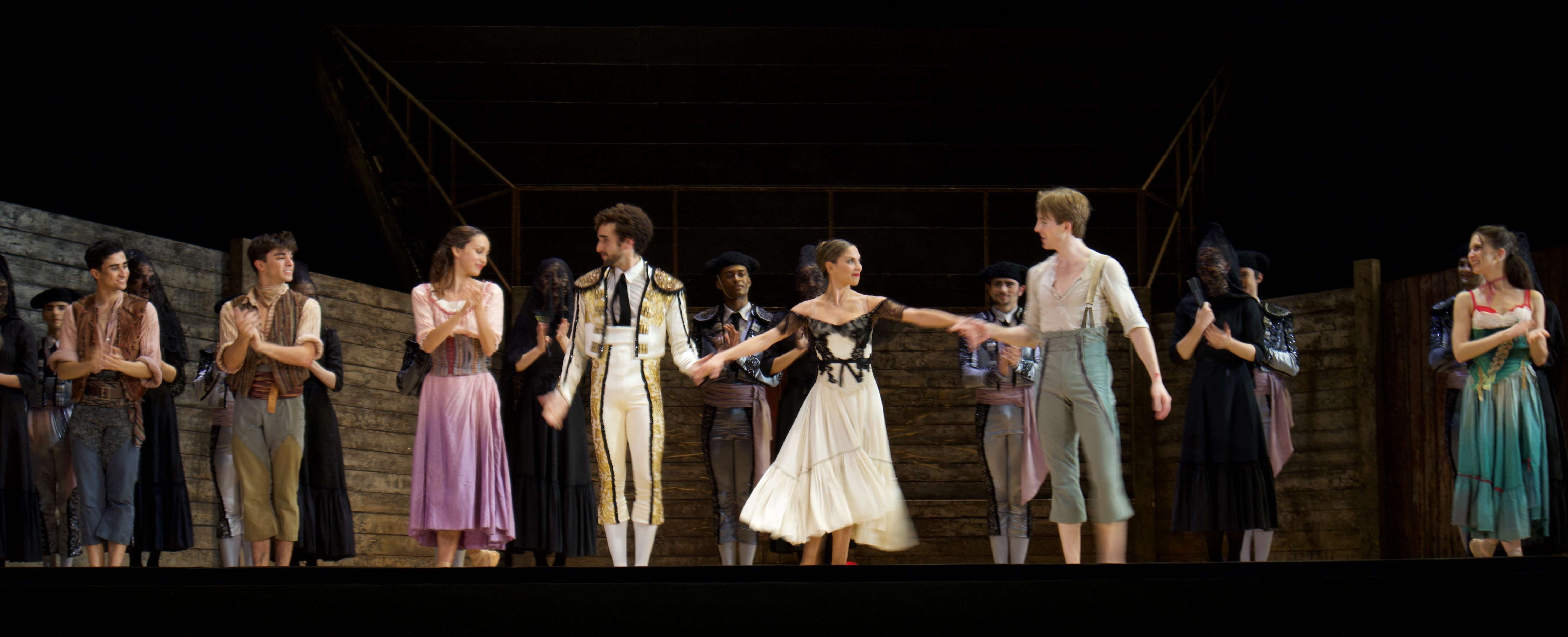I recently attended the Joffrey Ballet’s production of Carmen, and while I had the privilege of watching from a perfect front-row, center seat (thanks to a remarkable $30 ticket), I left the theater somewhat unsettled. The dancers’ technique was solid, the orchestra gave a nice performance, and yet — something about the production went fundamentally astray.

what went wrong in my pov:
Carmen Herself
The greatest shortcoming, in my view, lies in the characterization of Carmen. She was not the radiant, magnetic figure we expect — the embodiment of confidence, independence, and dangerous charm. Instead, this Carmen seemed curiously subdued, at times even mournful. When she rejected Don José, she appeared more sorrowful than defiant, as though regret had clouded her resolve.
It is, of course, possible to reinterpret Carmen as more sensitive or human, but this version tipped so far that she seemed almost a victim of circumstance, rather than its master. Without that spark of unapologetic self-possession, she ceased to be the fiery “queen of free love” that makes her so compelling. The absence of even a sly smile on her part felt especially jarring — Carmen, of all heroines, thrives on the smile that promises both pleasure and danger.
Structure and Pacing
The ballet stretched across three acts. Length alone is not the problem; it was the languid pacing and extended passages of inconsequential choreography that left me restless. Rather than heightening tension, these interludes diluted the drama.
Musical Choices
The orchestral adaptation, too, raised questions. For instance, the beloved Entr’acte, often used to portray Carmen’s intimacy with Don José, was inexplicably transposed down a major third — with the instrumentation left otherwise intact. The effect was less a creative reimagining than a puzzling detour.
The Bullfight
And then there was Escamillo. Traditionally, the toreador should exude swagger, allure, and effortless dominance — the kind of charisma that might tempt Carmen away from José’s tortured devotion. Here, though, he was portrayed with crude gestures and a rough manner more reminiscent of a street brawler than the adored hero of the arena. Far from captivating, he seemed almost parodic.

However, I’d still love Joffrey — and give a 10
In the end, I can’t be too harsh on Joffrey. For all its missteps, the production was still a meaningful cultural experience — one that brought Chicago’s ballet community together in a lively, shared space. (ie. it’s 100% worth a night at the Lyric Opera House with your loved ones)

The Carmen-inspired sangria at intermission was delightful!
I loved the touches of festivity: there was a live band before curtain and during every intermission. The Lyric Opera is a packed hall buzzing with energy, a sense of occasion that made the evening feel special. With that kind of atmosphere, you find yourself forgiving the flaws — and even looking forward to what they’ll try next.